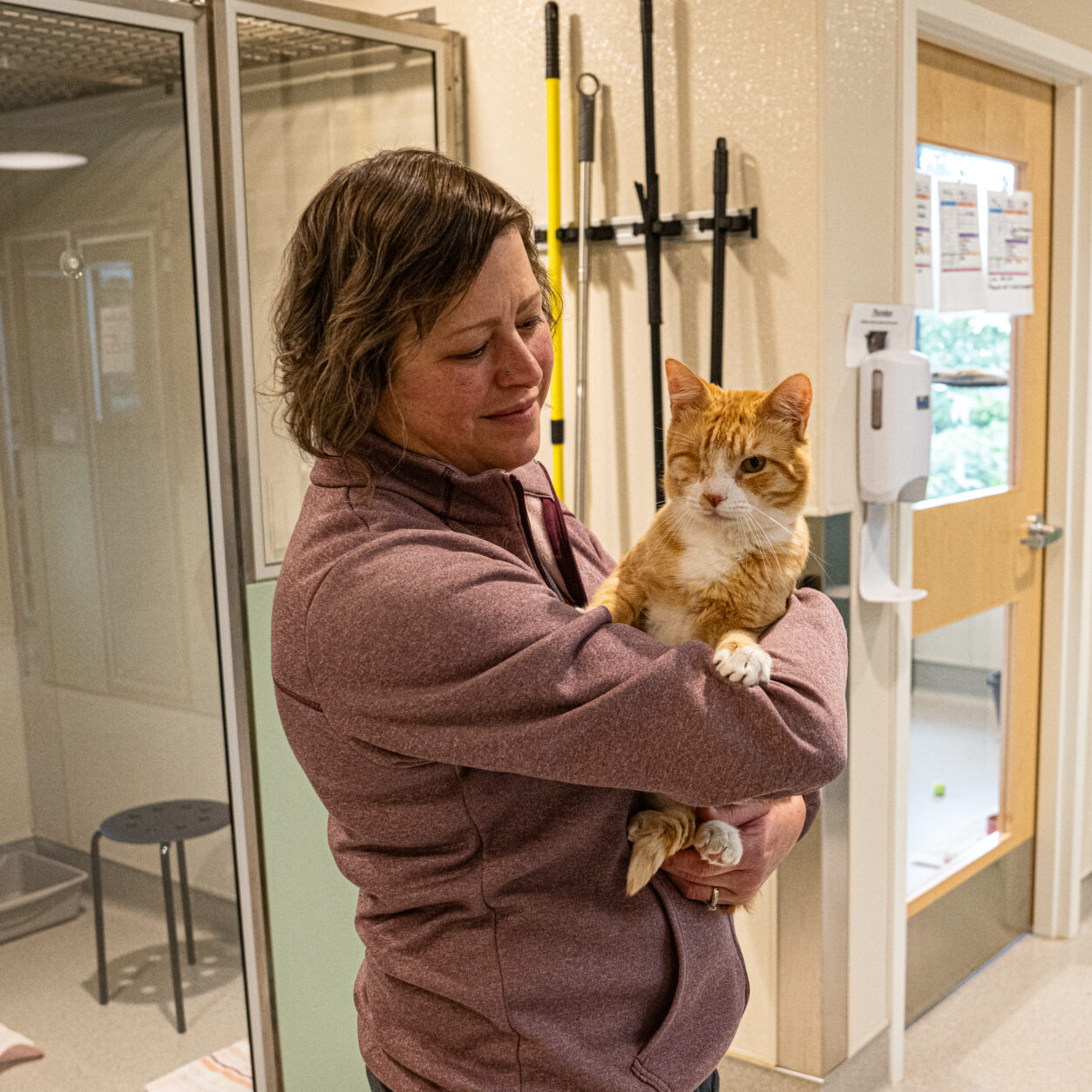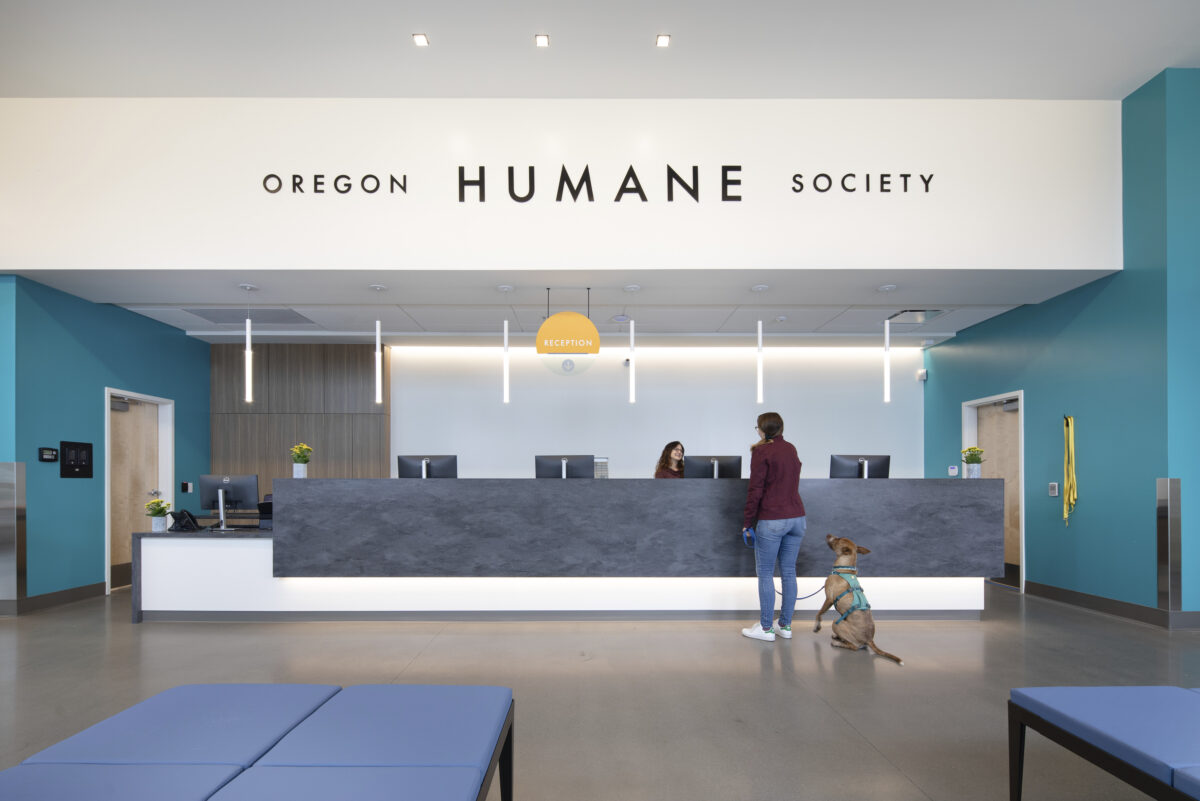In October of 2022, Lewis completed the New Road Ahead facility for Oregon Humane Society (OHS) in Northeast Portland. This expansion signified more than just a new chapter for OHS—it was a tangible step forward in the region’s approach to animal welfare, community support and justice.
Now, two years later, it’s clear that the facility has not only redefined the capabilities and capacity of OHS but has also had a profound impact on community safety, access to affordable pet care and law enforcement resources.
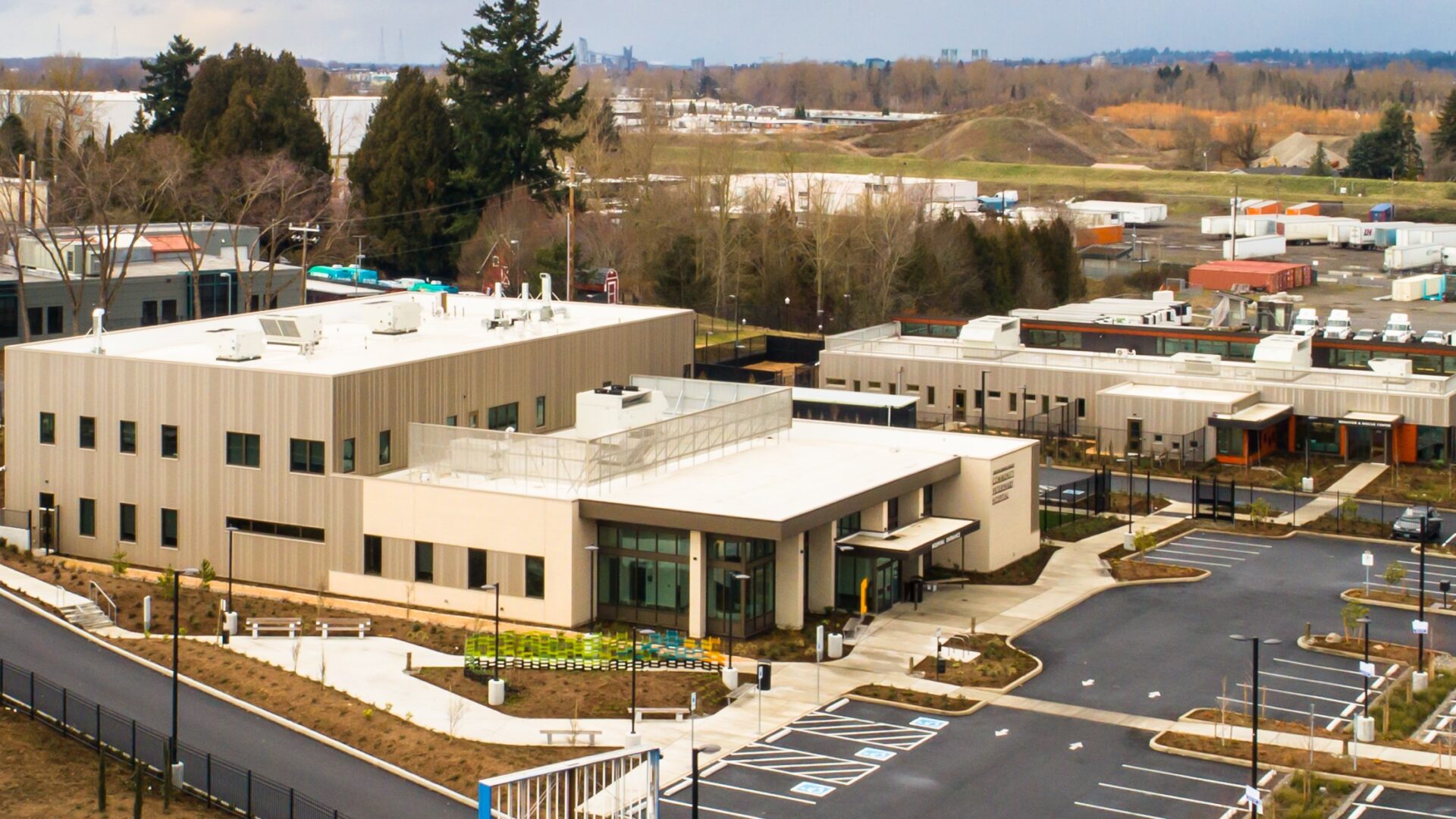
Lewis built two new pivotal structures for OHS: the Community Veterinary Hospital and the Behavior and Rescue Center (BRC). Together, these facilities have dramatically expanded OHS’s ability to care for animals, particularly those most in need.
The Community Veterinary Hospital is a groundbreaking 21,000-square-foot facility designed to provide veterinary services for underserved communities. With its state-of-the-art exam rooms, surgery suites, imaging rooms and even an isolation unit for animals with contagious diseases, this hospital has redefined how accessible veterinary care can be. Over the last two years, the hospital has distributed nearly $2 million in subsidized care to pet owners in our community. For many families struggling to afford pet care, this facility has been nothing short of a lifeline. On average, 79 clients per week have benefited from these affordable services, allowing their beloved pets to receive critical care without financial hardship.
“Pets are family members, and this hospital is rooted in the mission of keeping them together,” says Laura Klink, OHS’s public information officer.
In tandem with the hospital, the Behavior and Rescue Center (BRC) is a sanctuary for rescued animals needing rehabilitation before they can find loving homes. Designed with healing in mind, this 13,000-square-foot center features 68 kennels and four “Real Life Rooms,” which simulate the environments of adoptive homes to better prepare animals for life post-adoption. Since opening, the BRC has significantly increased the speed and quality of its work. Animals now “graduate” from the Behavior Modification Program 40% faster than before. In 2023 alone, more than 150 animals completed the program, demonstrating the efficiency and care provided in the new facility.
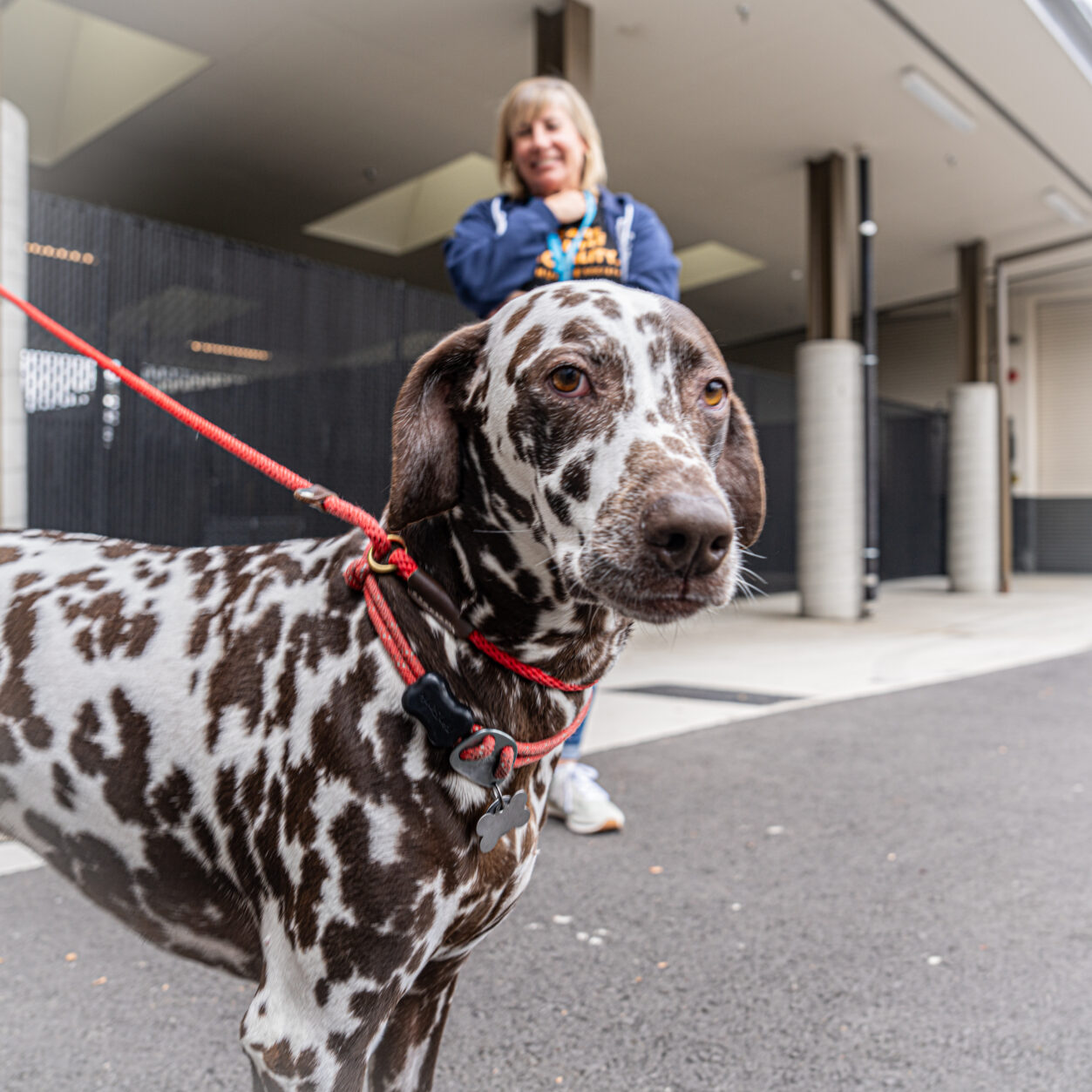
The Animal Crimes Forensic Center: justice for pets and people
One of the most innovative aspects of the New Road Ahead expansion project is the Animal Crimes Forensic Center (ACFC), located on the second floor of the Community Veterinary Hospital. As a first-of-its-kind project on the West Coast, the ACFC has become a crucial tool in investigating and prosecuting animal abuse and neglect cases. The forensic center, which includes a necropsy suite, forensic exam rooms, secure evidence storage and a walk-in freezer, works closely with OHS Humane Special Agents and local law enforcement agencies to gather evidence critical for prosecuting animal abuse and neglect cases.
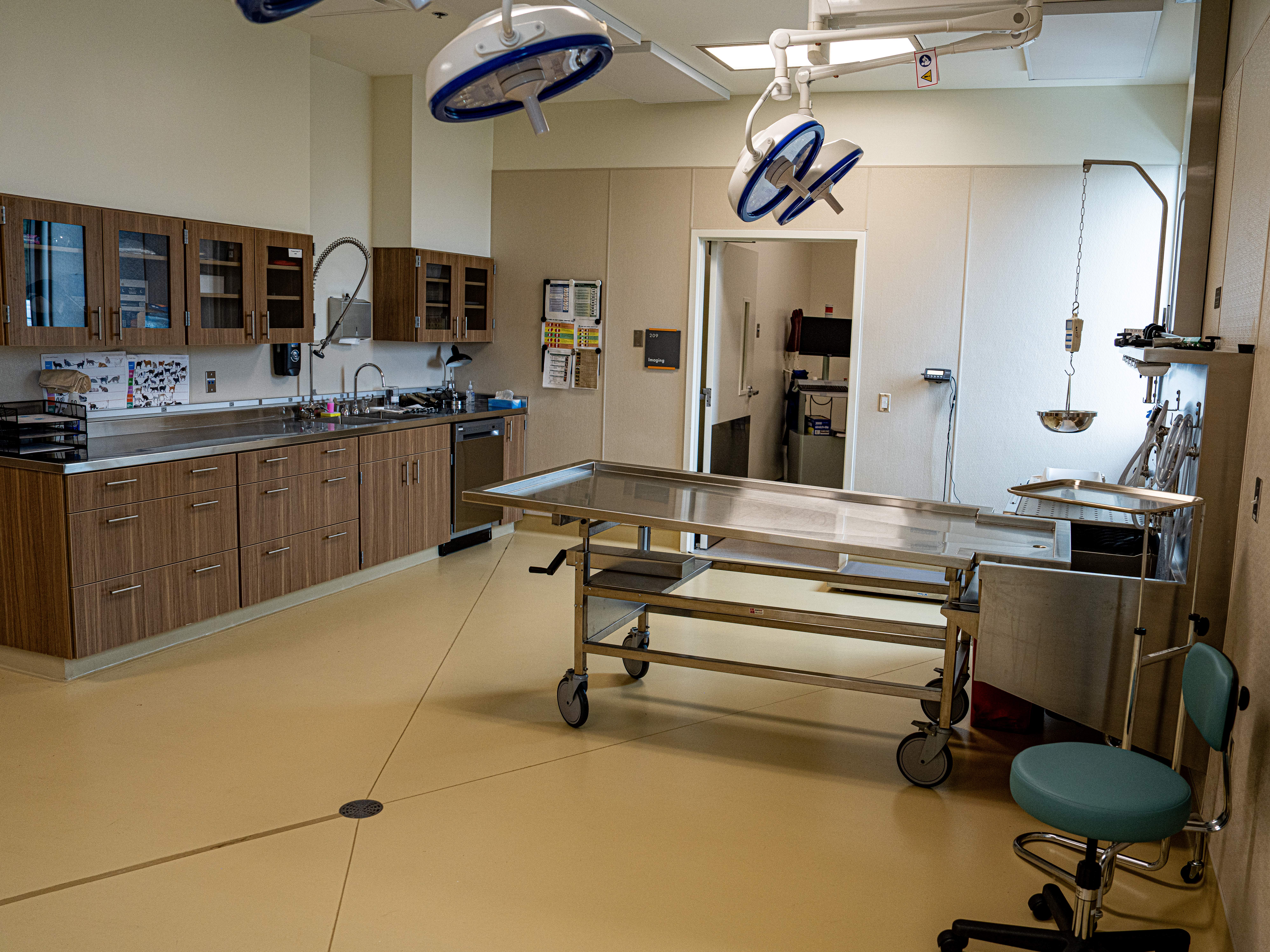
“I am most proud of the collaboration with other agencies. We’ve been able to partner with 27 different agencies across the country. It is encouraging to see their trust in us and see our reach expanding,” says Lila Obeng, an OHS agency support specialist and evidence technician.
In its first full year of operation, the ACFC provided forensic services for 61 cases—almost half of which were for external law enforcement agencies. The work of the ACFC has brought justice for countless animals, including Judith, a cat rescued from a neglect case in Salem. Judith, along with several other cats, was found living in unsafe conditions without food or water. After being brought to OHS, Judith became one of the first animals to receive a forensic exam at the ACFC. This meticulous process, involving x-rays, bloodwork and detailed documentation, provided the evidence needed to convict Judith’s former owner of animal neglect in the first degree.
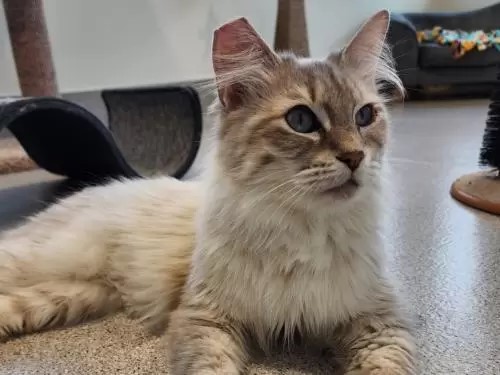
Beyond serving animals like Judith, the ACFC plays a broader role in protecting the entire community. By investigating and prosecuting animal cruelty cases, the ACFC contributes to a safer society for both animals and people. Studies show that individuals who harm animals are more likely to harm humans, and by enforcing animal welfare laws, the ACFC is helping to curb potential violence. On this topic, Veronica Broadley, OHS’s humane law enforcement support services manager, said, “There’s a strong link between abuse of animals and violence against humans, and the forensic work we do is crucial for community safety.” In this way, the work done at the forensic center is not just about animals—it’s about creating a safer, more compassionate community for everyone.
This new resource has empowered OHS to speak for animals who cannot speak for themselves. The Humane Law Enforcement team saw more than 542 cases in 2023, responded to 3,800 reports of suspected abuse or neglect and helped close to 2,000 animals. With the ACFC providing expert forensic analysis, OHS now has the tools to ensure justice for abused and neglected animals—something that strengthens not only the health and safety of animals but the whole community.
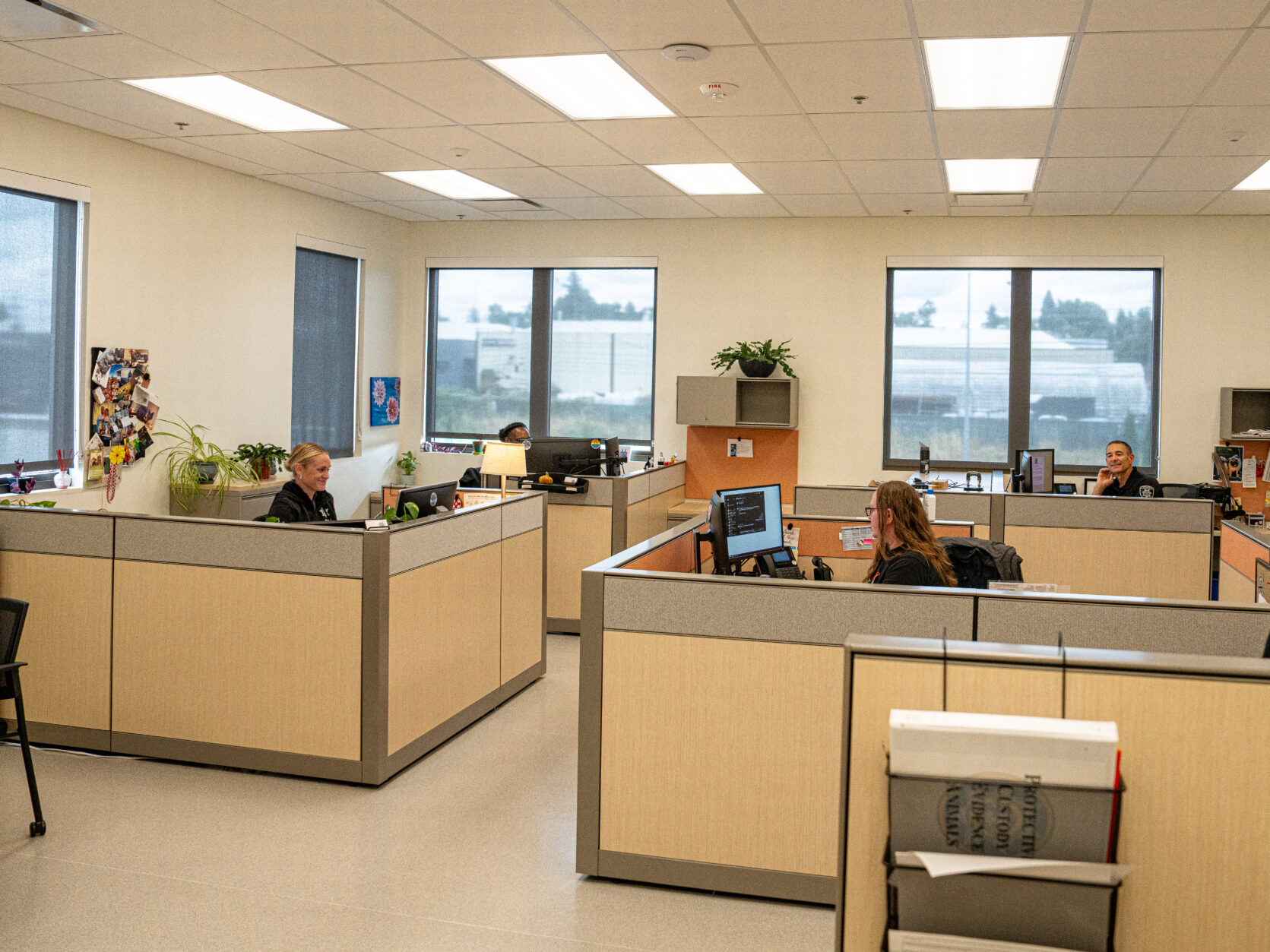
Expanding OHS’s mission
The New Road Ahead project has enabled OHS to expand its mission in ways that were unimaginable just a few years ago, including serving 20,632 patients at the new Community Veterinary Hospital in the first year alone. The addition of the BRC has allowed OHS to take in more animals from situations like natural disasters or overcrowded facilities, while the Community Veterinary Hospital ensures that no pet goes untreated due to financial constraints.
Building for a Brighter Future
When Lewis partnered with OHS to build the New Road Ahead facility, the goal was simple: build a place where animals could receive the care, justice and second chances they deserve. Two years later, the facility has exceeded expectations. With more than 20,000 patient visits, over $2 million in subsidized care and hundreds of animals rehabilitated, it’s clear that the work being done here is transforming lives. “The new space perfectly meets and exceeds our needs. I think that really speaks to the thoughtful collaboration between the architects, Lewis and our staff,” says Laura Klink, OHS’s public information officer.
At Lewis, we are proud to have played a role in this transformation. The New Road Ahead facility is a testament to the power of thoughtful, community-focused construction. We are not just building structures—we build spaces that improve lives, strengthen communities and make our city safer.
